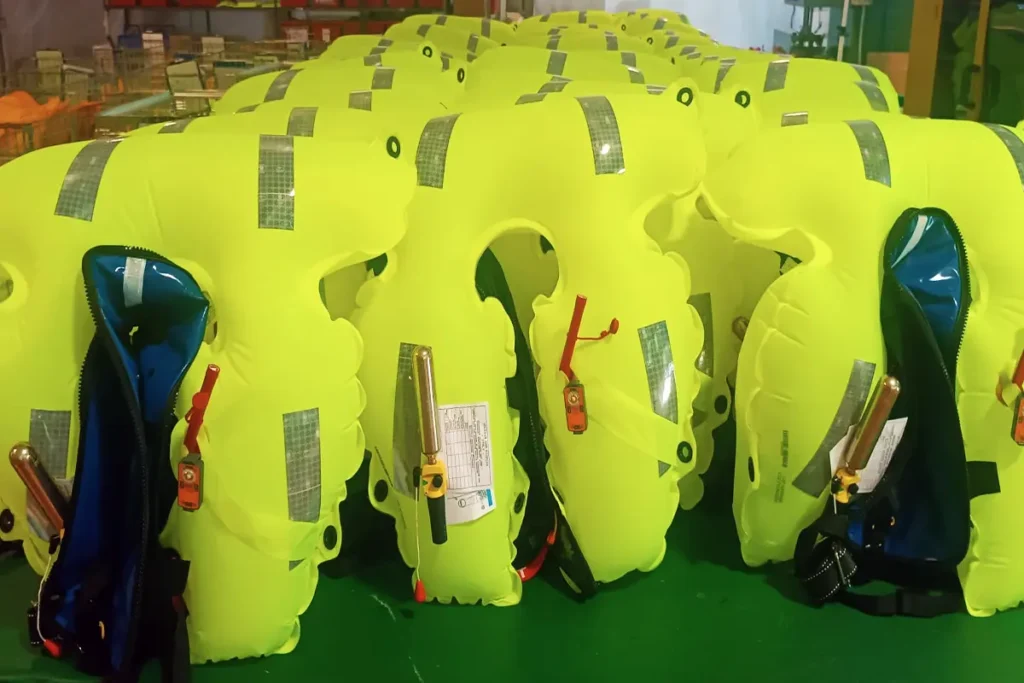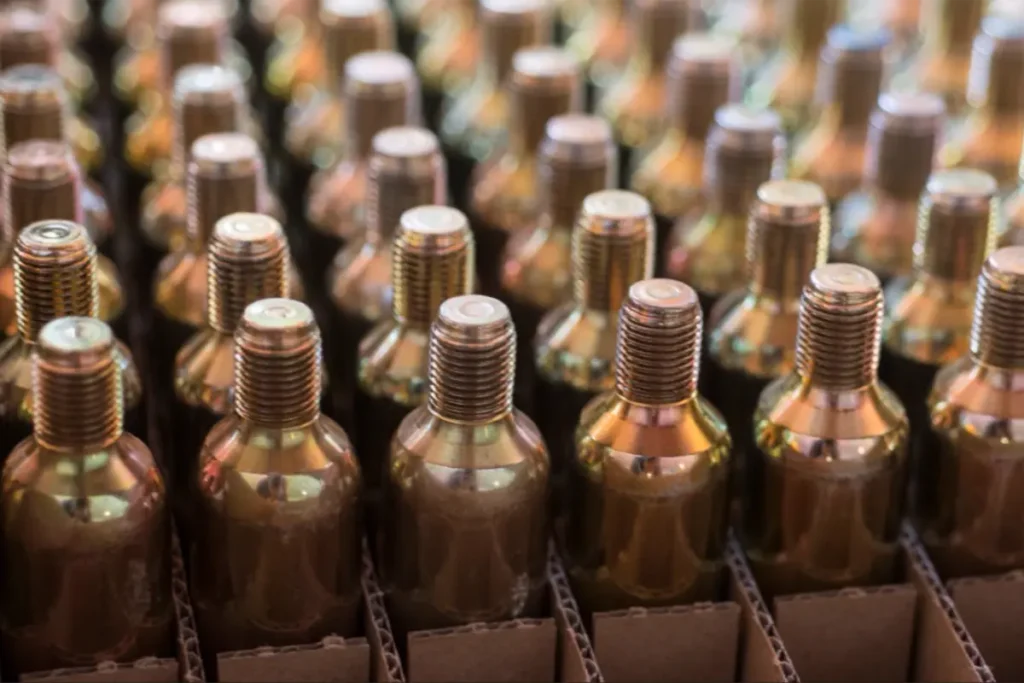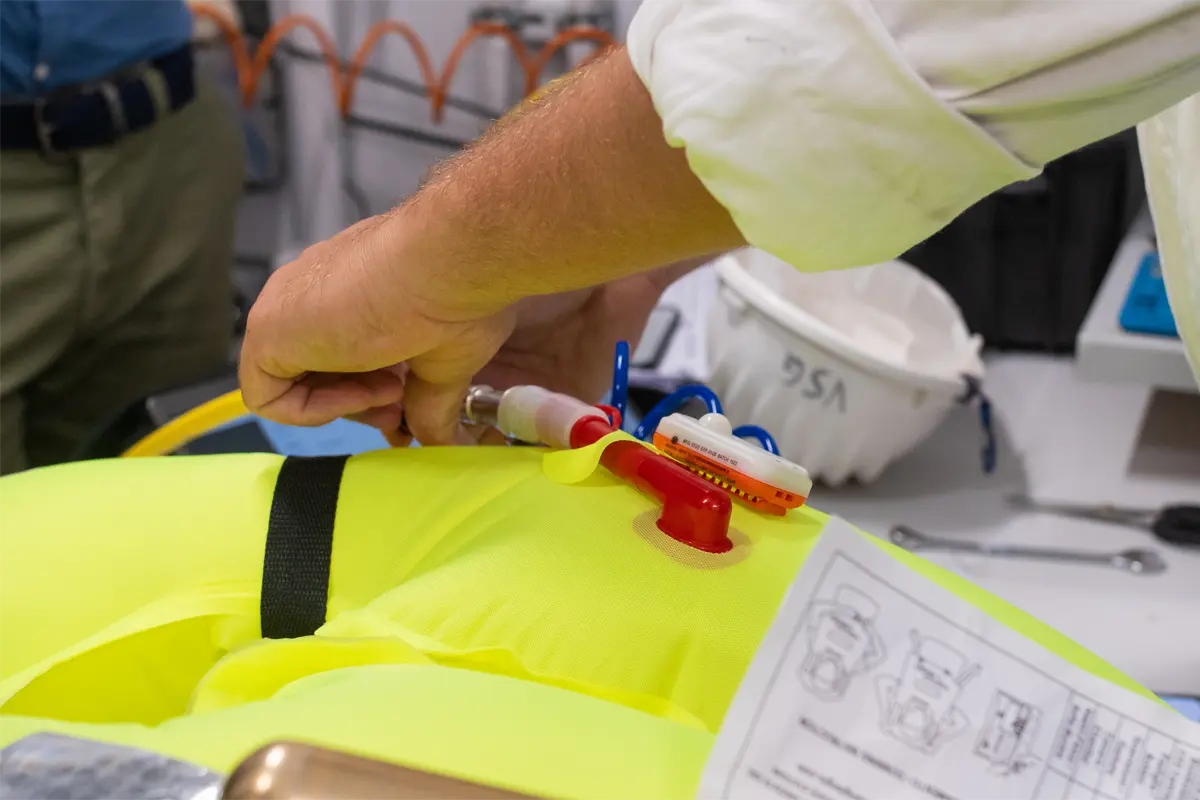Life jackets maintenance is essential to ensure their effectiveness and safety and prolong their life.
Life jackets are indispensable life-saving devices that ensure safety in the water but, like all equipment, they require regular care and maintenance to make sure they function properly when you need them most.
Life jackets are essential devices for safety at sea and in lakes and rivers, for both professionals and lovers of water-based activities.
A well-maintained life jacket can make all the difference: choosing the right life jacket is very important, but so is keeping it in perfect condition. This is why regular maintenance of life jackets is not only recommended, but absolutely essential.
Why is regular maintenance essential?
A life jacket, especially if used at sea, is exposed to numerous factors that can compromise its effectiveness over time. Salt, sunlight, seawater and general wear and tear can all damage the materials.
Regular maintenance is essential in order to:
- Ensure reliability: a life jacket that is not correctly maintained may not float properly, or may even fail when needed. A life jacket may not be used for years, but it must be ready for use in an emergency. If it is not checked regularly, defects could develop that compromise its effectiveness, such as air leaks in inflatable models or damage to the flotation material in rigid models;
- Comply with safety regulations: maritime authorities in many countries require life jackets to be inspected regularly to ensure they are safe and compliant with safety standards. Keeping devices compliant – if necessary consult the current legislation – not only avoids sanctions, but also guarantees that the devices are actually ready for use;
- Extend the life of the jacket: regular maintenance helps preserve the integrity of the materials and prevent irreparable damage that would reduce their life. The materials used in life jackets, such as buoyant foams or inflatable chambers, outer fabrics and stitching, can deteriorate due to environmental factors such as exposure to sunlight, humidity or salt. Regular maintenance helps you identify and remedy any damage before it becomes irreparable.
How to clean, dry and store a life jacket correctly

- Cleaning: after each use in salt water, it is important to rinse the life jacket with fresh water to remove salt, which can damage fabrics and shorten the life of the device. Avoid harsh or abrasive detergents that may compromise the materials.
- Drying: after washing, dry the jacket in the open air, away from direct sunlight. Prolonged exposure to sunlight can damage the outer material and affect its resistance. Avoid using dryers or direct heat sources, which could deform or damage the materials.
- Storage: store the jacket in a cool, dry and well-ventilated place. Avoid leaving it in places that are damp or too hot (such as near stoves or heaters), which could reduce its effectiveness. Do not fold excessively, as creases can damage the material and affect buoyancy.
How to rearm an inflatable life jacket
If your life jacket has been used, you need to replace the water-soluble tablet or activation system (in the Hammar type) and check that your circuit breaker is working correctly.
After using and activating the device, we recommend contacting a repair centre authorised by the manufacturer to rearm it.
You can carry out the following procedures to reset your device:
- Deflate the device as illustrated in the previous paragraph, and rinse in fresh water. Do not use solvents or detergents to clean traces of oil or dirt, only a solution of fresh water and neutral soap. Do not use a washing machine or dryer, and do not spin. If used without activating an automatic device, remove the canister and the water-soluble cartridge before cleaning. After washing, let it dry thoroughly in the air, not in direct sunlight.
- Check the inflatable chamber and/or the outer shell for any damage or signs of excessive abrasion that could cause malfunction.
- Check the condition of straps, buckles, stitching and zips if present.

When to replace a worn or expired life jacket
Even if a life jacket has been well maintained, over time the materials can lose their buoyancy and protective properties.
Here are some signs that your device may need to be replaced:
- Visible wear: tears, holes or abrasions on the surface of the vest. If the flotation material (inflatable chamber, foam) is damaged or deformed, the vest must be replaced.
- Inflation valves/activators not working: if the vest is inflatable, check the activator and the CO2 cartridge. If the cartridge is empty, damaged or non-refillable, it is essential to replace it.
- Product expiration: many life jackets have a limited lifespan, typically 10 to 15 years, depending on the model and materials. Always check the expiry date indicated by the manufacturer.
Checklist before a new sailing season
Before each new season in which your life jacket will be used, it’s important to carry out a series of checks to ensure that it is in perfect condition. Here’s a checklist to follow:
- General inspection: carefully check the condition of the outer shell and all its components (e.g. straps, buckles, adjustments, zips). Fully open the device, unfolding the inflatable chamber. Check the condition of the inflatable chamber, paying particular attention to the entire perimeter of the seams. Carefully check the condition of the straps securing the cover and the openings where straps are attached.
- Check the cartridges: remove the cartridges from their housing; check for obvious signs of damage and/or corrosion. Check the production date and capacity of the cartridges (in grammes); check that their weight corresponds to that indicated on the packaging.
- Inspect the inflation tubes: check the condition of the inflation tubes, paying particular attention to the valves inside.
- Check the activators and valves: make sure that the housing for the cartridge is clean and in good condition. Replace the safety and evidence of use indicator (normally green plastic) if necessary.
- Check retro-reflective tape: check that all the required retro-reflective tape is present on the inflatable chamber.
- Test whistle: check the condition of the whistle.
- Light check: if the test button is present, check that the light is working and does not show any signs of wear.
- Check accessories: if the device has special accessories such as hoods or chemical light sticks, check their validity by examining the expiry dates and their status. If necessary, replace.
- Pressure test the inflatable chamber: inflate the chamber with a simple inflation tube, wait around 12 hours and check that there is no loss of pressure.
- Documentation and notes: note on the vest when the above checks have been made. Manufacturers usually supply labels for this purpose.
- Replace and close: replace the chamber inside the outer shell, taking care not to damage it and checking all the retro-reflective tapes are in place.
- Fold the chamber carefully, making sure that the activator and its cord do not remain folded inside.
For a more thorough inspection, we recommended contacting a specialist centre that can carry out technical checks and issue conformity certifications.
Useful resources for spare parts or repair kits
If you find any signs of damage (e.g. to the activation system) during your inspection of the jacket, these can be repaired with special kits. The kits are generally easily available from:
- The manufacturer’s website: leading life jacket manufacturers sell original spare parts and repair kits on their websites;
- Professional technical assistance: if the damage is more complex, we always recommended contacting an inspection and assistance centre specialising in the maintenance of life jackets.
The risks of neglecting maintenance
Ignoring life jacket maintenance can have extremely serious consequences. A faulty device can malfunction in an emergency, putting lives at risk. Furthermore, in professional contexts such as maritime transport or rescue operations, the use of non-compliant jackets can have serious legal and financial insurance repercussions.
Conclusions
Regular maintenance of life jackets is a simple but essential operation to ensure safety in the water. Correct cleaning, drying and storage of your device, along with regular checks, can prolong its life and ensure it is always ready for use. Don’t forget to replace it when necessary, for guaranteed safety during water activities. With proper care, a life jacket can continue to serve its protective purpose for many years. A jacket in perfect condition can make the difference between life and death in a critical situation. Taking regular care of it is not just a matter of common sense, but an investment in your own safety and that of others.
